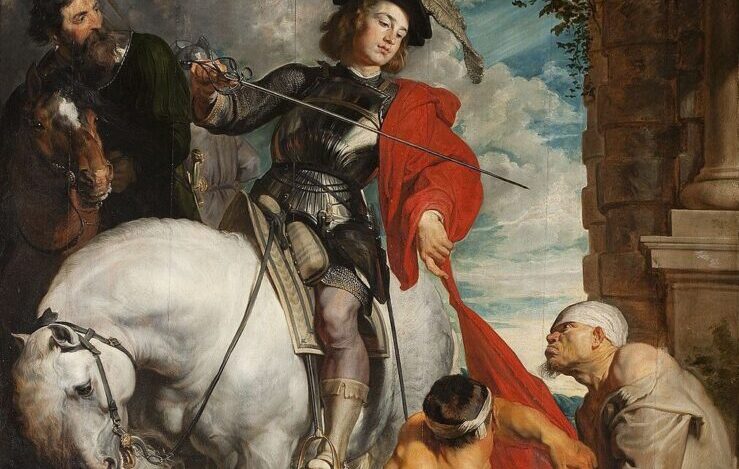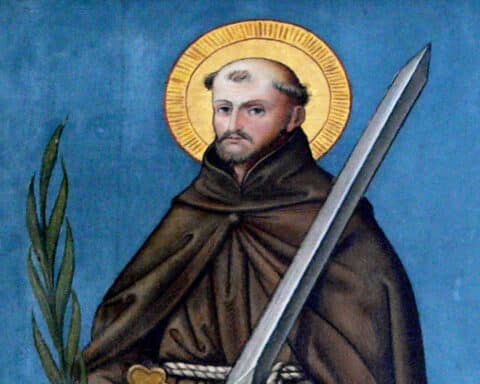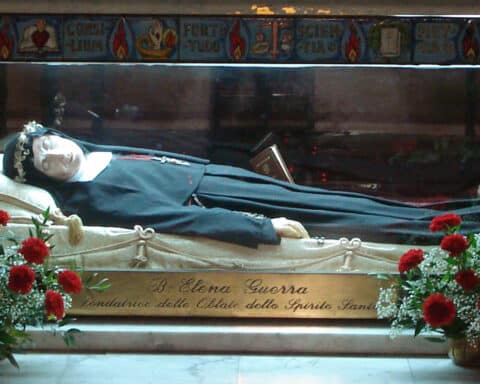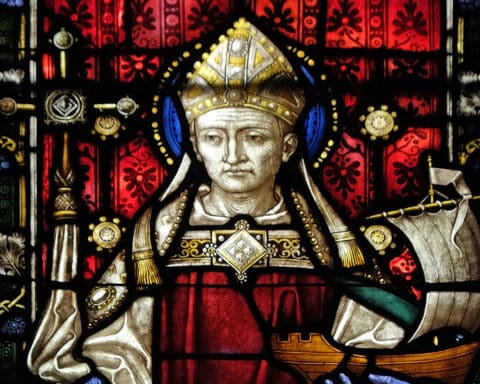We like to think we follow the saints, but sometimes the saints follow us.
As I walked home from class, in Tours, France, I had an irresistible urge to explore the church I was passing by. As I entered, I marveled at the architecture. A choir of nuns happened to be singing Vespers.
The moment was like the scene where the main character experiences a revelation in every Hollywood movie, except it was actually playing out for me. In real life.
I knelt in a pew at the back of the church. The nuns kept chanting. And I began to pray.
Then I noticed something strange about the church. The altar appeared to have two tabernacles. How strange, I thought. This required investigation.
I rose and approached the sanctuary. Even as the sun fell, the neo-Byzantine church was luminous. Gazing up at the brass chest perched on top of the high altar, I couldn’t determine what it was. I searched around for a brochure.
Discovering St. Martin
Then, thanks to the help of reading, I learned: the chest was not a second tabernacle, it was a reliquary. It contained a relic of the skull of St. Martin of Tours. And in fact, the church was not only dedicated to him but included his tomb. Twin staircases descended on either side of the high altar (not unlike St. Peter’s in Rome). I continued my exploration.
The dimly lit crypt flickered in the candlelight. Ex-votos, mementos of prayers answered and favors received, adorned the sandstone walls. The smell of beeswax and the cold damp of the subterranean refuge were intoxicatingly peaceful. Again I knelt in prayer. I prayed for my family. For my vocation. Probably for help with my French, too.
It was the first visit I made to a saint’s tomb. And it was a complete accident.
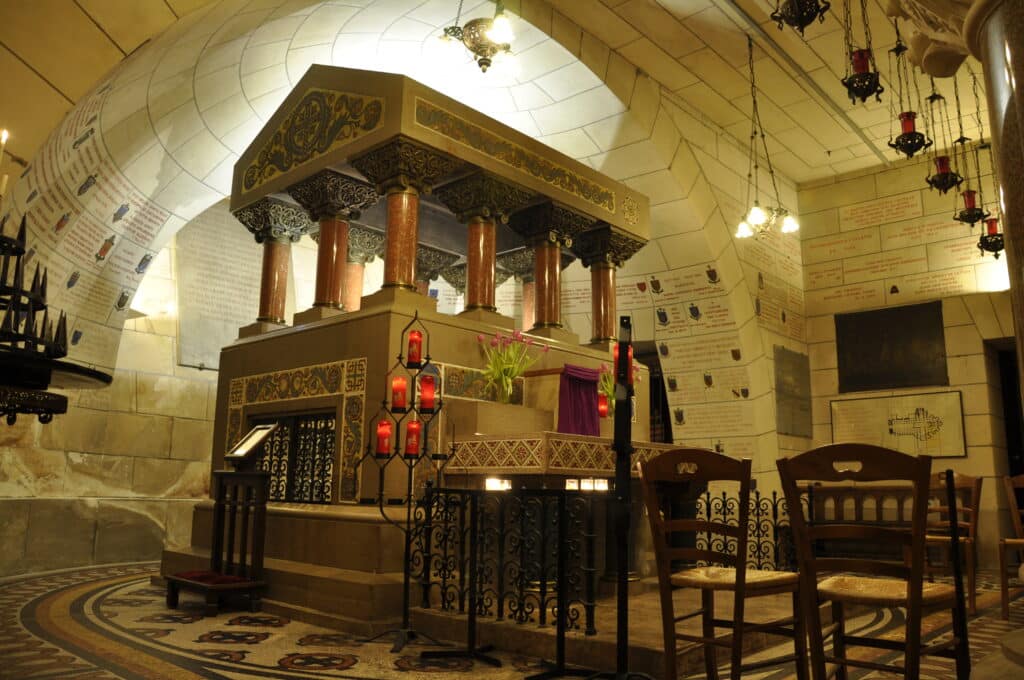
I was baptized in St. Martin of Tours Catholic Church in Martinsville, Indiana. It was my grandmother’s parish, my mother’s family church. It was the place where I received the grace of faith. And here I was, an undergraduate in France, receiving grace through St. Martin, yet again.
The Basilica of St. Martin of Tours was once one of the greatest monuments in the Christian world. Today, all that remains of the ancient church is one tower. The current church was rebuilt after the French Revolution. The building hadn’t just fallen into despair. Revolutionaries used the church as a stable, then subsequently ripped it stone from stone. Then, to make sure it couldn’t be rebuilt, they sold the stones.
But it was rebuilt.
Pursued by the saints
And there’s a lesson in that. Jesus always has a way. Often that way is through his saints, who pursue us. The saints invite us to come to them, not for their own glory, but to know Christ.
St. Martin’s story shows this clearly. A Roman soldier, he famously split his cloak in two and gave half to a beggar on the street one cold winter night. Christ later came to him in a dream, revealing that he had been the beggar. The inscriptions around his tomb bear eloquent testimony to the power of his intercession.
St. Martin’s love of Christ is what made him a saint. And through the centuries pilgrims can discover that love anew for themselves. Devotion to him is what inspired the reconstruction of the once-destroyed basilica. And through Martin’s intercession, the faithful are still discovering new grace.
I know St. Martin was pursuing me that day, now 16 years ago. We are closer to the saints than we often think. And, pray God, may we one day be numbered among them.

